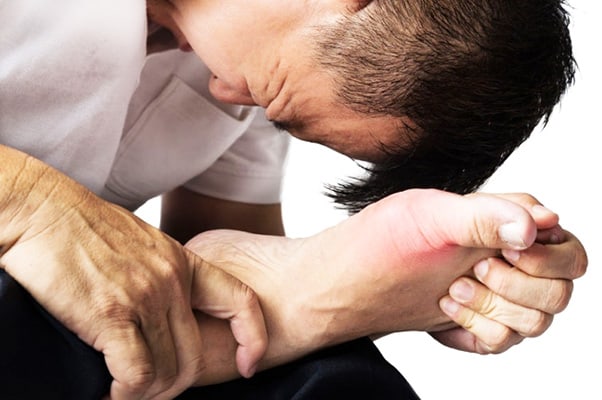Medical authorities say that there are more than 100 different types of arthritis. Some of them are more common while others are rare. A type of arthritis that you probably hear or read about all the time is gout. This article will tackle some of the most important things about this oftentimes excruciatingly painful problem concerning the joints.
Don’t forget to repost this article afterwards especially if you have friends and family members who are also suffering from gout.
Cause
Gout is the result of the accumulation of needle-like crystals in the joints. Those crystals are hardened uric acid and, based on the description of their physical appearance, it’s quite obvious that they can cause a great deal of pain.
Uric acid is actually the byproduct of the breakdown of purines, which are compounds that are found abundantly in the likes of seafood, meat and poultry. Needless to say, more purines accumulate in your body the more food sources of them that you consume.
Purines are typically removed from the body by your kidneys. But if there are simply more purines around than your kidneys could handle, some of them end up deposited in the joints. This is basically how gout comes into being.
Signs and Symptoms
Most people associated gout with the big toe. Well, they are right because it’s true that it is the big toe that is commonly affected. However, doctors would like to make it clear that gout can also affect other joints in the body, and some of them include the ankles, knees, fingers, elbows and wrists.
While it is developing or even after it has developed, it’s not unlikely for gout to produce no sign or symptom at all. But when signs and symptoms are around, they usually like to make their presence known instantly, catching the individual by surprise. More often than not, too, they strike in the middle of the night.
A joint affected by gout feels really painful. When the pain subsides, it is replaced by discomfort, swelling and redness.
Risk Factors
Doctors confirm that some people are simply more prone to having gout than others. Basically, those who are at high risk of having it means that it can be easy for uric acid to collect in their bloodstream and then accumulate and crystallize in their joints.
People who may easily end up with gout include:
Men, although menopausal women are at risk as well
Overweight individuals
People who like to eat lots of purine-rich foods
Those who consume excessive amounts of alcohol as alcohol can interfere with purine elimination
Individuals who take certain medications like diuretics
Those with family history of gout
Experts say that some cases of gout have something to do with trauma, surgery and long-term exposure to lead.
Treatment
Most cases of gout are treated with medications. There are different types of medication for this form of arthritis that doctors may prescribe. Some of them are for dealing with the signs and symptoms of gout, such as non-steroidal anti-inflammatory drugs or NSAIDs as well as corticosteroids.
Other drugs for gout are given either to minimize the production of uric acid in the body or enhance the ability of the kidneys to flush excess uric acid out of the body.
By the way, some doctors also prescribe medications that can help keep gout complications from striking. Some complications of gout include the formation of kidney stones as well as tophi, which are deposited uric crystals at the surface of the joint or at times in the cartilage or skin.
Some people recover from gout even without treatment after 1 to 2 weeks.













